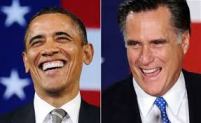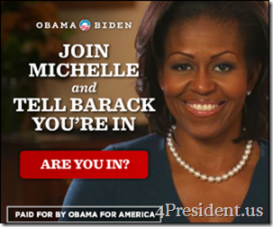Could a Strategy that Helped Re-Elect a President Improve Marketing Campaigns?
Campaigns?
When searching for the best marketing tactics, strategists and account planners probably don’t give much consideration to presidential politics. But a key factor in the 2012 election revealed a highly effective stratagem for moving people to action. Wise tacticians and digital marketers will find useful ways to apply it.

Writing in Forbes, author Roger Dooley relates:
A group that calls itself “COBS,” for “consortium of behavioral scientists,” was one part of Obama’s winning marketing strategy. Benedict Carey of The New York Times reports that a “dream team” of behavioral researchers offered input and even helped create scripts for the Obama campaign.
The team was organized by Craig Fox, a behavioral scientist at UCLA. It included experts like Robert Cialdini, professor emeritus at Arizona State University and author of the social science classic Influence: The Psychology of Persuasion, and the University of Chicago’s Richard Thaler, coauthor of Nudge.
In the weeks before the election, polls showed President Obama and Mitt Romney in a virtual dead heat. A quick response to Hurricane Sandy helped the President open a slight lead. Now his challenge was the same one faced by CMOs and direct marketers every day: moving those with favorable attitudes to action.
Moving people to action
How did these renowned experts in marketing psychology get Obama supporters to show up and vote on Election Day? Dooley continues:
One example of applied research in the Obama campaign drew on a technique well-documented by Cialdini – the power of a written commitment to alter behavior:
Simply identifying a person as a voter, as many volunteers did — “Mr. Jones, we know you have voted in the past” — acts as a subtle prompt to future voting, said Dr. Cialdini, a foundational figure in the science of persuasion. “People want to be congruent with what they have committed to in the past, especially if that commitment is public,” he said.
Many volunteers also asked would-be voters if they would sign an informal
commitment to vote, a card with the president’s picture on it. This small, voluntary agreement amplifies the likelihood that the person will follow through, research has found.
Getting commitments on the web
Strategies employing the power of written commitments also appeared on the Internet. Making use of a potent digital marketing strategy, visitors to major news sites were greeted with a picture of Michelle Obama and a caption that read, “Join Michelle and tell Barack you’re in. Are you in?”
Making use of a potent digital marketing strategy, visitors to major news sites were greeted with a picture of Michelle Obama and a caption that read, “Join Michelle and tell Barack you’re in. Are you in?”
Having received mentoring in marketing psychology myself from Dr. Cialdini, I recognize that this is a very smart strategy based on sound research. Like the President’s speech before Congress in support of the Affordable Health Care Act, it was vintage Cialdini. In that address, Mr. Obama related instances where Congress had courageously passed unpopular bills that proved to be very important to the health and welfare of Americans.
Like reminding voters of their past participation, this acts as a “subtle prompt” to act congruently with what Congress had done in previous decades. Relating courageous acts of previous legislators also employed a favorite tactic of Nobel Peace Prize winner and former Egyptian President Anwar Sadat. It utilized social psychology research on labeling and gave Congress a good name to live up to. And it worked! Despite the fact that every other universal health care initiative brought before Congress had failed, The Affordable Health Care Act passed.
Improving marketing campaigns with social psychology research
My point in all of this is not to endorse President Obama, although he deserves credit for being smart enough to build his communication strategies around solid research that demonstrates how people really think. Nor is it to praise Dr. Robert Cialdini, though the approaches I learned in the in-depth study through which he mentored me helped me increase conversion rates by over 50% in one marketing campaign and achieve ROI of 16.5 to 1 in three others. Neither of them needs my help.
My goal is to provide solid evidence that using peer-reviewed and replicated social psychology research really does improve marketing communications campaign results. Madison Avenue has successfully used it for years. Now 1600 Pennsylvania Avenue is employing it as well. So, despite my lacking as likable a spokesperson as Michelle Obama, I must ask – “Psychology-based marketing gets better results. Are you in?”
Larry Rondeau, BS – Marketing Psychology has crafted campaigns that have achieved ROI as high as 50 to 1. He is seeking full-time employment or consulting opportunities in Marketing, Account Planning, Sales Training or Content Creation/Management. Contact him at larryrondeau@cox.net.

One word.. Great! Two words.. Very awesome! Three words.. I love it!
Lovely! Very well-done! 🙂
I must thank you for the efforts you’ve put in writing this blog. I really hope to check out the same high-grade content from you later on as well. In fact, your creative writing abilities has encouraged me to get my own website now 😉
Hello! Someone in my Myspace group shared this website with us so I came to take a look.
I’m definitely loving the information. I’m bookmarking and will
be tweeting this to my followers! Superb blog and great design.